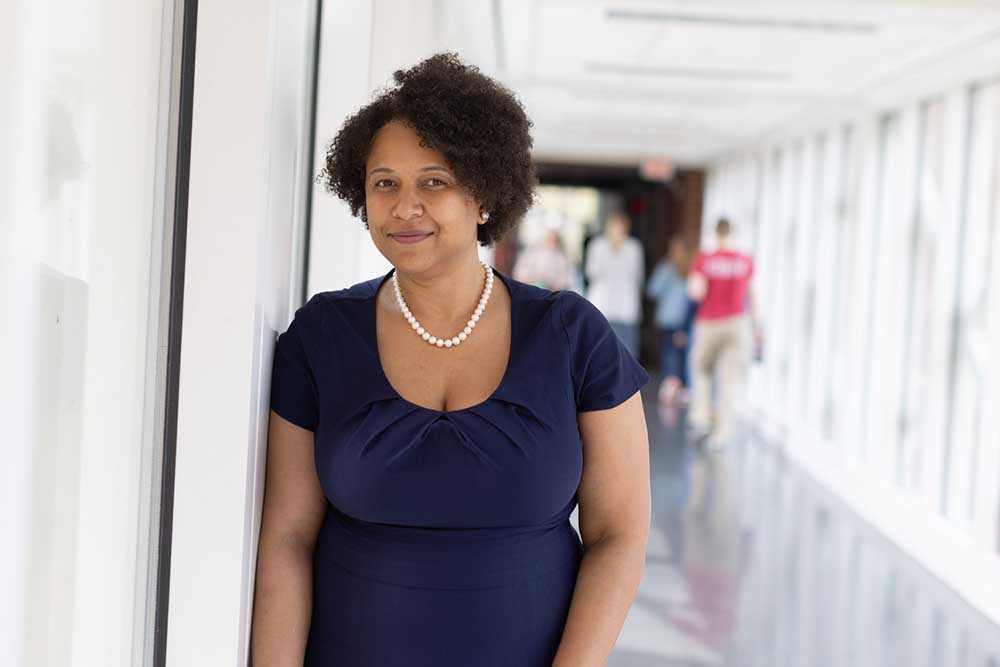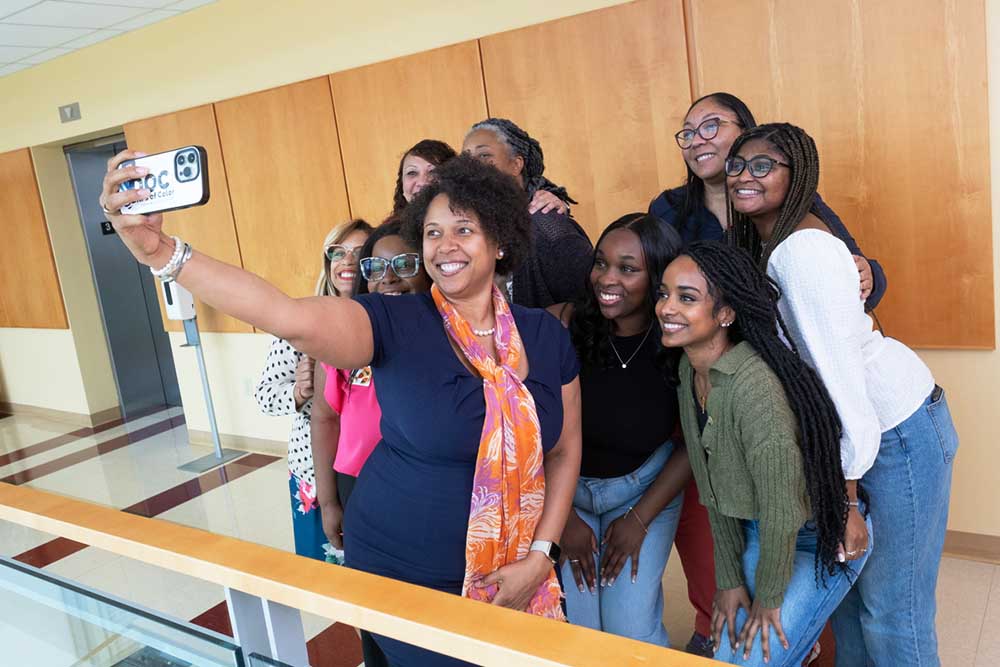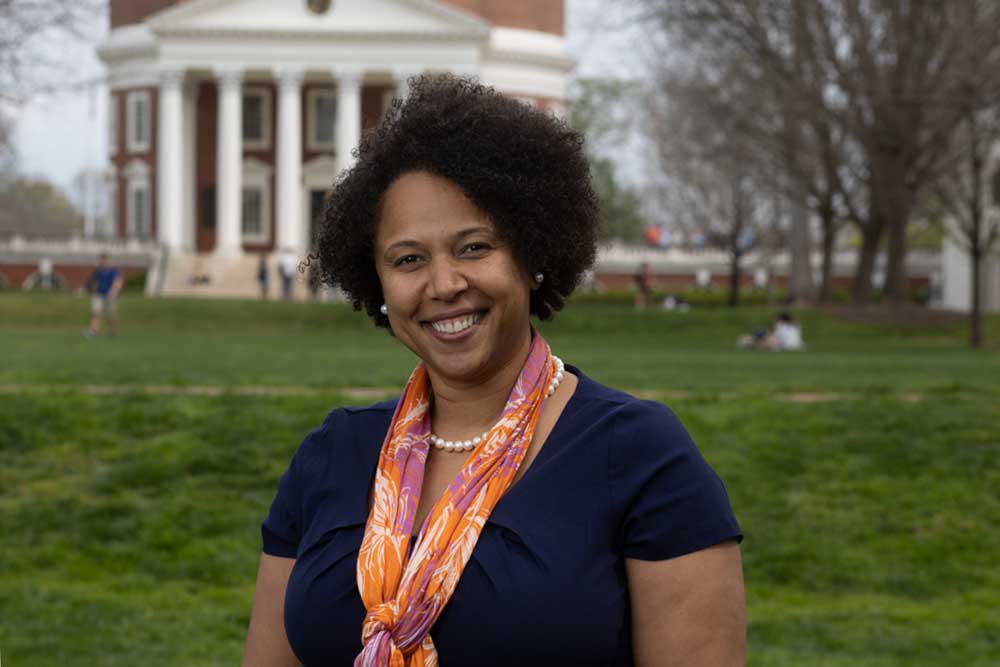
Nursing in 'Full Color'
Danielle McCamey (BSN ’03) remembers facing “the million-dollar question”: DNP or PhD?
“I needed someone who looked like me who had been there and survived earning a terminal degree—without it killing them.”
Danielle McCamey (BSN ’03), founder of DNPs of Color and a Johns Hopkins assistant dean
Early on, the DNPs of Color founder felt unmoved by DNPs’ value. It was the early 2010s, the degree was new, and McCamey was already at the top of her game: a respected advanced practice nurse at MedStar Washington Hospital Center, in Washington, D.C., relied upon by peers and the students she mentored.



“What’s the DNP going to add,” McCamey thought back then, “that I’m not already doing?”
But after being pushed by a mentor to enroll in Georgetown’s new DNP program, it wasn’t long before McCamey became a believer. She’d have epiphanies about why certain patients became “frequent fliers,” how access, health literacy, and medication and treatment compliance were all driven by social drivers of health, and how she might drive change through quality improvement and evidence-based practice.
Exciting as it was, McCamey’s sense of isolation—she was her program’s only Black woman at a predominantly white institution—weighed on her. Yes, the DNP opened doors, but “the demands and the pressure showed up in my coursework,” she recalled. “I needed someone who looked like me who had been there and survived earning a terminal degree—without it killing them.”
So in 2016, on a whim, McCamey created the Facebook group “DNPs of Color.” A week later, the group had 200 active members who answered one another’s questions, shared experiences, discussed DNPs’ job prospects, and uplifted one another. It wasn’t long before the group had 300, 600, then 1,000 members. Today, the 2,000-member DNPs of Color is a non-profit with an annual conference, regular professional development opportunities in publishing research and preparation for faculty roles, and a robust social media presence. The movement “gives members validation, helps them feel seen, and gives them a community rooting for them,” McCamey said, countering members’ perceived need to “shrink our differences—our hair, language, dress—so we fit in.”
“Within DNPs of Color,” said McCamey, “you can be your authentic self.”
DNPs of Color is striking a chord in an important moment. Unlike other graduate nursing programs, the number of DNP students is growing, according to the American Association of Colleges of Nursing. Today, there are more than 11,100 DNP graduates, a group that is increasingly relied upon to become nursing faculty, McCamey said, even if it remains hard for them to earn research funding.
“I think the NIH and others will change their funding models eventually,” McCamey said. “We DNPs are taught to evaluate resources and create teams, so a lot of us have gotten very creative at maneuvering around systems.”
Inspired, too, by her mom, Shelley McCamey, a former home health nurse with a “gift for centering people,” McCamey credits UVA with helping her “understand the value of being of service and giving me a commitment to excellence in everything I do”—traits McCamey, now an assistant professor and assistant dean at Johns Hopkins University School of Nursing, pays forward with her students.
“I want people to feel comfortable and confident that they’ve done the work to earn where they are,” she said, “that they can operate in the energy of who they truly are and take hold of their authority in whatever space they’ve chosen. They may be the only one in the room, but I hope they use their difference to distinguish and advance themselves.”
###
DNPs of Color’s 4th annual convention is October 17-20 in Philadelphia, PA. Register: www.dnpsofcolor.org
